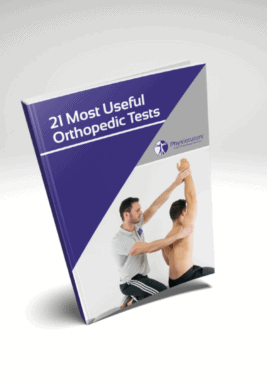Learn
Shoulder Resisted Isometric Testing
Resisted Isometric Testing of the Shoulder is part of the basic assessment. It can quickly tell you if the musculotendinous unit of any muscles of the shoulder girdle is possibly affected. Usually, it is performed after active and passive range of motion assessment.
Supine
Have your patient lie in supine position with the arm resting on the bench with slight abduction and the elbow flexed to 90°
Support the arm around the distal end of the humerus. Ask your patient to resist your movements.
- Flexion: Apply resistance in the direction of extension
- Extension: apply resistance in the direction of flexion
- Adduction: apply resistance in the direction of abduction
- Abduction: apply resistance in the direction of adduction
- Medial Rotation: fixate the humerus and apply resistance medially to the wrist
- Lateral Rotation: fixate the humerus and apply resistance at the wrist laterally to the wrist
You will also have to assess elbow flexion and extension, as the bicep and tricep muscles span over the elbow and shoulder joints.
- Elbow flexion: Apply resistance at the wrist in extension direction and fixate the humerus to the bench
- Elbow extension: apply resistance at the wrist in flexion direction and fixate the humerus to the bench
Sitting
- Protraction: apply resistance by pulling acromia backward
- Retraction: apply resistance by pushing acromia anterior
- Elevation: apply caudal pressure on the clavicle and scapula
- Depression: flex the patient’s elbows to 90°, slightly shrug patient’s shoulders and apply cranially directed pressure through the longitudinal axis of the humerus
Also check out our post on active range of motion assessment as well as passive range of motion assessment of the shoulder.
21 OF THE MOST USEFUL ORTHOPAEDIC TESTS IN CLINICAL PRACTICE

References
–
Like what you’re learning?
BUY THE FULL PHYSIOTUTORS ASSESSMENT BOOK
- 600+ Pages e-Book
- Interactive Content (Direct Video Demonstration, PubMed articles)
- Statistical Values for all Special Tests from the latest research
- Available in 🇬🇧 🇩🇪 🇫🇷 🇪🇸 🇮🇹 🇵🇹 🇹🇷
- And much more!








